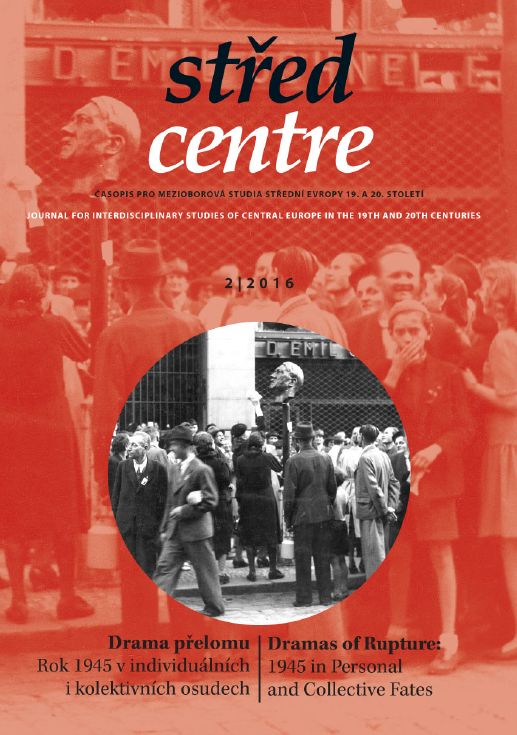„V naší zemi bude konec války psán krví.“
“In our land the end of the war is going to be written by blood.”
Collective Violence of the Year 1945 in the Czech Lands as Politics, Culture and Social Practice
Author(s): Jaromír MrňkaSubject(s): History, Social history, Recent History (1900 till today), WW II and following years (1940 - 1949)
Published by: AV ČR - Akademie věd České republiky - Masarykův ústav
Keywords: history; Czech lands; collective violence; May 1945; violent rituals; mass atrocities; ethnic cleansing; specialist in violence; rage and fury;dehumanization;
Summary/Abstract: The study is focused on the phenomenon of collective violence that took place in the territory of the Czech lands during the spring and summer 1945. Albeit the war operations had been concluded since the 8th May 1945, general living conditions resembled rather a continuation of the war in the time – at least until the end of the July 1945. Despite the traditional interpretation of the May 1945 as a crucial reversal, the study focuses on the collective violence as a phenomenon overlapping traditional turning points.Remaining high amount of violent interactions is an element connecting the final war operations with the first weeks and months after. Applying concepts of political sociology (Charles Tilly), social psychology (Philip Zimbardo) and sociology (Randall Collins) the study strives to capture interdependent nature of collective violence between its structural preconditions and situational dynamics. Based on the quantitative evaluation of the acts of collective violence, the first part outlines a macro social topography of collective violence with the main focus on the period between April and August 1945.The main point is an identification of key actors of the politics of collective violence and their correlation to basic configurations of particular political regimes (i.e. occupational regime of the so called Protectorate and limited democratic regime of Czechoslovakia after May 1945). The second part evaluates social and cultural mechanisms facilitating escalation of violent situations into mass atrocities.The study identifies impulsive acts of collective violence as limited to temporary transitive violent rituals and turns attention to the important role of the state organised specialists in concrete violent situations.
Journal: Střed. Časopis pro mezioborová studia Střední Evropy 19. a 20. století
- Issue Year: 8/2016
- Issue No: 2
- Page Range: 66-91
- Page Count: 25
- Language: Czech

